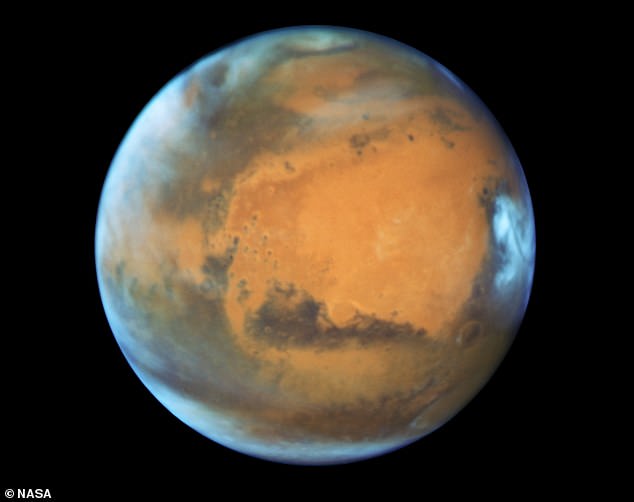NASA and Elon Musk’s SpaceX plan to send humans to Mars within the next 20 years, but a key hurdle is making the atmosphere breathable.
Now, scientists in China say a promising plant species could convert the Red Planet’s carbon dioxide-rich atmosphere into breathable oxygen.
Steppe moss, also known as Syntrichia caninervis, is found in extreme desert landscapes such as Tibet and Antarctica.
Laboratory experiments show it can survive freezing temperatures and deadly radiation rays, typical conditions on the Martian surface.
According to experts, moss is even more resistant than tardigrades, the microscopic organisms described as “indestructible.”
Mars is the fourth planet from the Sun: a dusty, cold, desert world with a thin atmosphere. In the image, Mars captured by the Hubble telescope
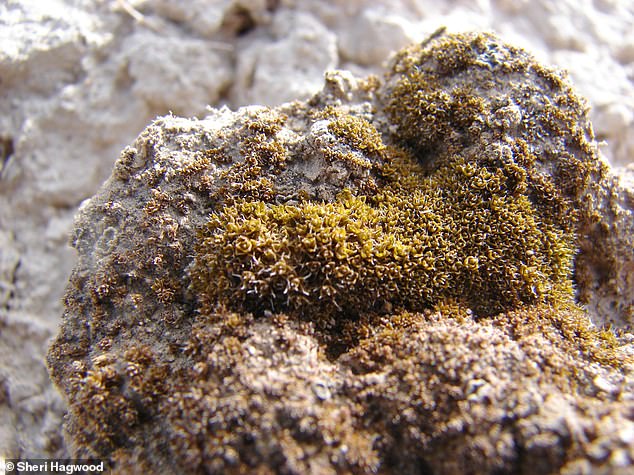
Laboratory experiments show that the moss, called Syntrichia caninervis, survives freezing temperatures and powerful radiation rays.
The experts, from the Chinese Academy of Sciences in Beijing, are not suggesting that humans eat S. caninervis on Mars to stay alive (like Matt Damon’s character ate potatoes in “The Martian”).
This is because the plant is not edible and would provide little nutritional value if we ate it (although it is not toxic).
However, if it could proliferate on the Red Planet, it could convert Martian carbon dioxide (CO2) into oxygen to help create a breathable atmosphere.
One of the many obstacles to “terraforming” Mars is its atmosphere, about 95 percent of which is made up of CO2, at levels too high for humans to breathe.
“Many plans for establishing human settlements on other planets focus on adapting crops to grow in controlled environments,” the team says.
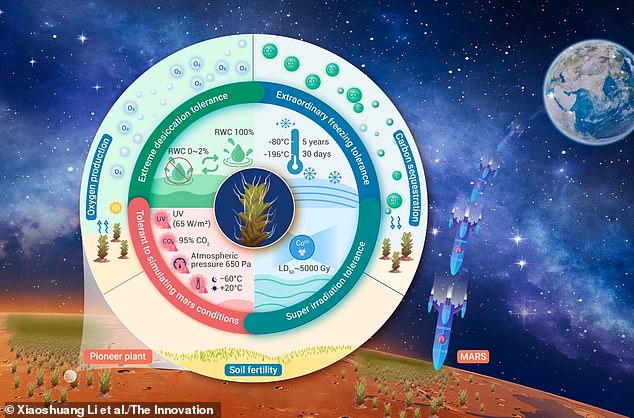
Pictured here is the team’s graphic summary showing the plant’s ability to convert Martian CO2 into breathable oxygen while withstanding radiation and freezing temperatures.
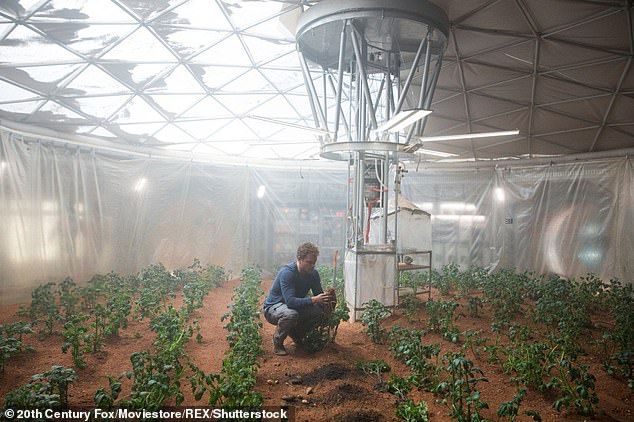
Experts do not suggest that humans eat S. caninervis on Mars to survive, because the plant is not edible. Pictured here, Matt Damon as Dr. Mark Watney growing potatoes on Mars in the 2015 film ‘The Martian’
‘Our study shows that the environmental resilience of S. caninervis is superior to that of some highly stress-tolerant microorganisms and tardigrades.’
S. caninervis, already well known for its ability to tolerate drought conditions, is found in Tibet, Antarctica, and the circumpolar regions of Eurasia and North America.
Given the moss’ ability to survive in extreme environmental conditions, the researchers decided to test its limits in the laboratory.
They stored the plant at -112°F (-80°C) in an ultra-cold freezer for up to five years and at -320°F (-196°C) in a liquid nitrogen tank for up to 30 days.
In all cases, the plants regenerated when thawed, although their recovery was slower compared to the control specimens that had been dehydrated but not frozen.
However, it’s unclear how researchers expected the moss to thaw when constantly exposed to cold Martian conditions.
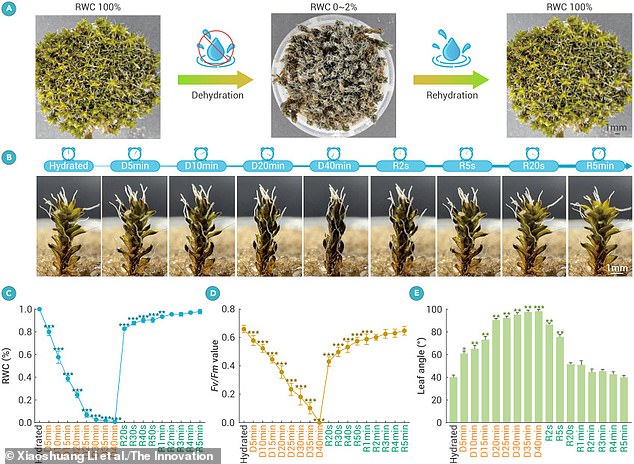
In laboratory tests, plants regenerated when thawed, although their recovery was less rapid compared to control specimens that had been dehydrated but not frozen.
In laboratory tests, the moss also demonstrated the ability to survive exposure to gamma radiation that would kill most plants, something typical of what the Martian surface is exposed to.
Surprisingly, powerful radiation doses of 500 Gray (Gy) even appeared to promote plant growth, i.e. “the regeneration of new branches.”
For comparison, humans experience severe seizures and death when exposed to around 50 Gy of radiation.
Finally, the experts tested the moss’ ability to withstand Mars-like conditions using the Chinese Academy of Sciences’ Planetary Atmosphere Simulation Facility, an ultra-high vacuum (UHV) simulation chamber.
The simulator’s Martian conditions included air composed of 95 percent CO2 (the same as on Mars) and fluctuating temperatures that ranged above and below freezing, as well as high levels of UV radiation and low atmospheric pressure.
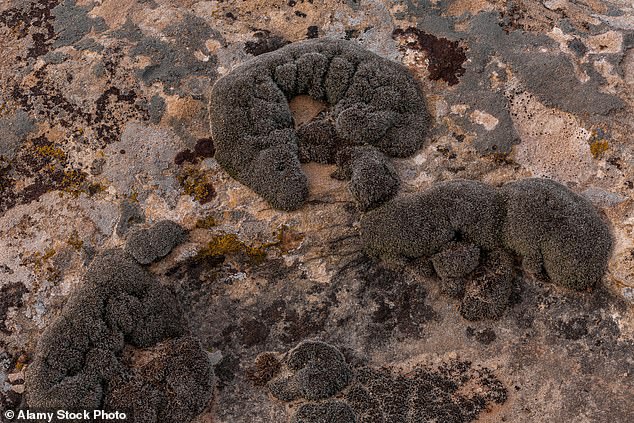
Steppe moss (Syntrichia caninervis) waits for rain among lichens in Hackberry Canyon of Hovenweep National Monument, Colorado, USA.
The dried moss plants reached a 100 percent regeneration rate within 30 days after being subjected to Martian conditions for one, two, three and seven days.
Hydrated plants, which were only exposed to the simulator for one day, also survived, although they regenerated more slowly than their dehydrated counterparts.
The team cautions that their study does not prove that moss can be transported to Mars or even explain how it might be planted there.
However, the study identifies S. caninervis as “a pioneering plant growth” on the Red Planet as space agencies work toward “self-sustaining habitats” there.
“Looking ahead, we hope that this promising moss could be taken to Mars or the Moon to further test the possibility of colonizing and growing plants in outer space,” they say.
‘Our results indicate that S. caninervis is one of the most radiation-tolerant organisms known.’
The study has been published in the journal The innovation.

